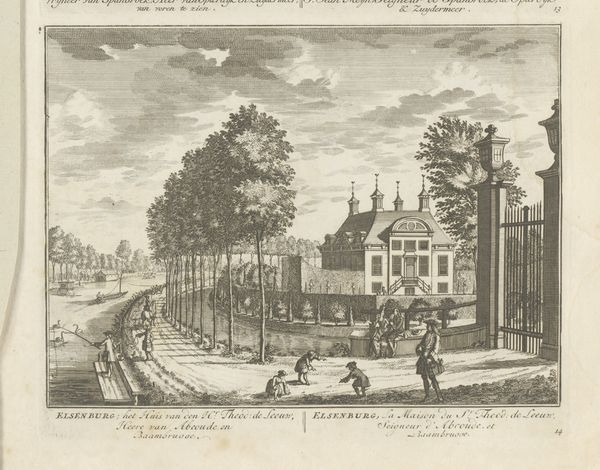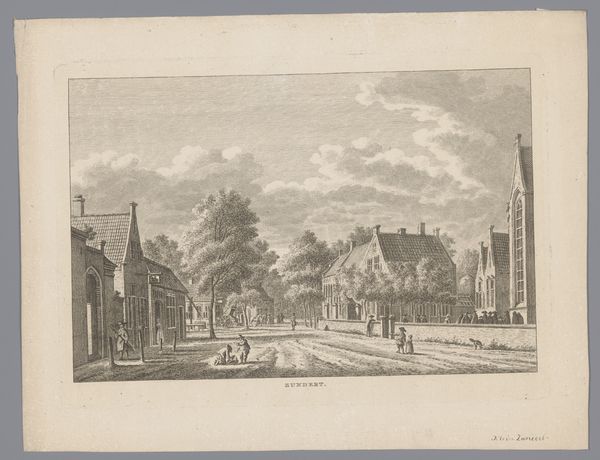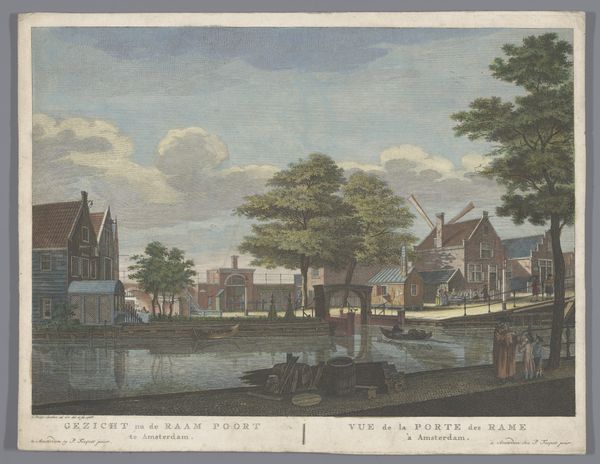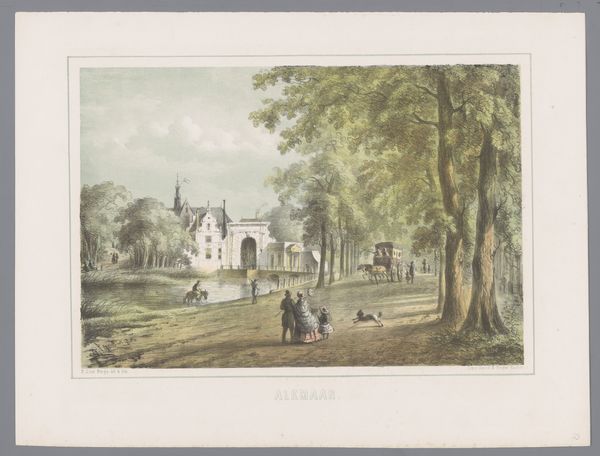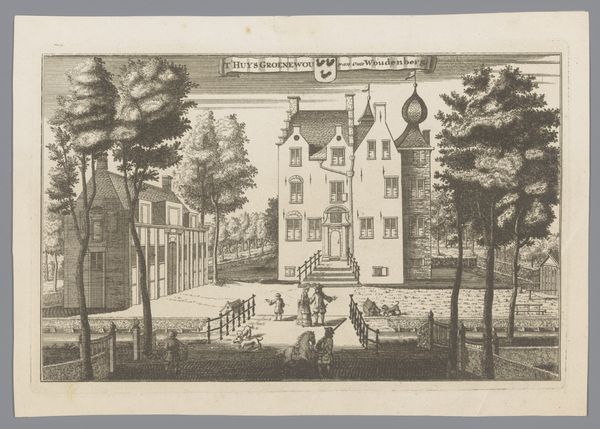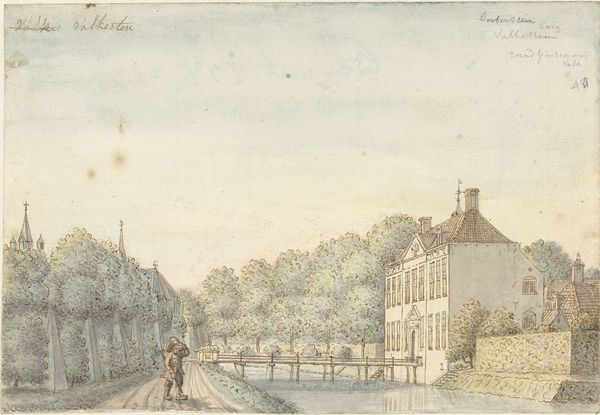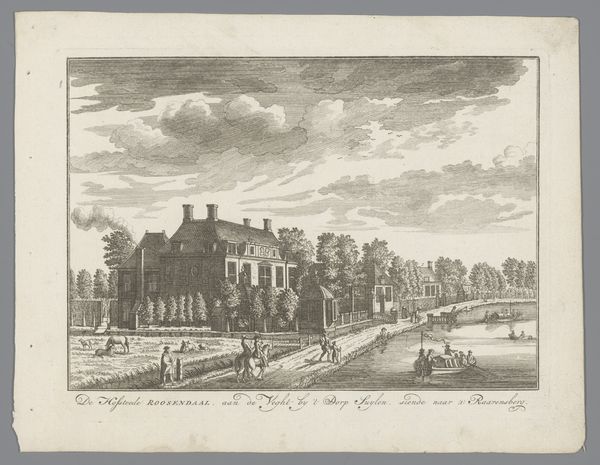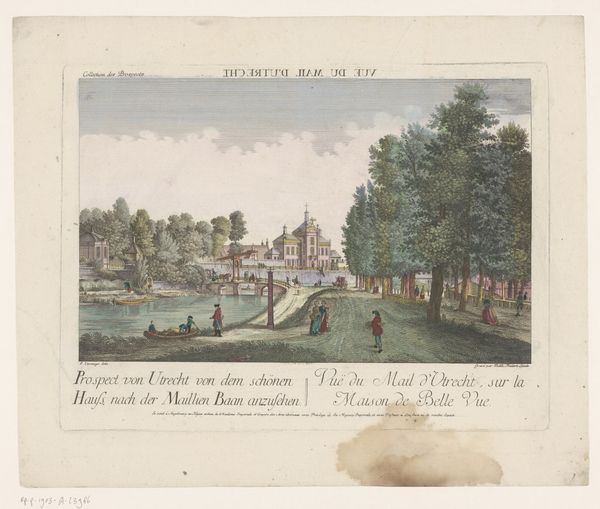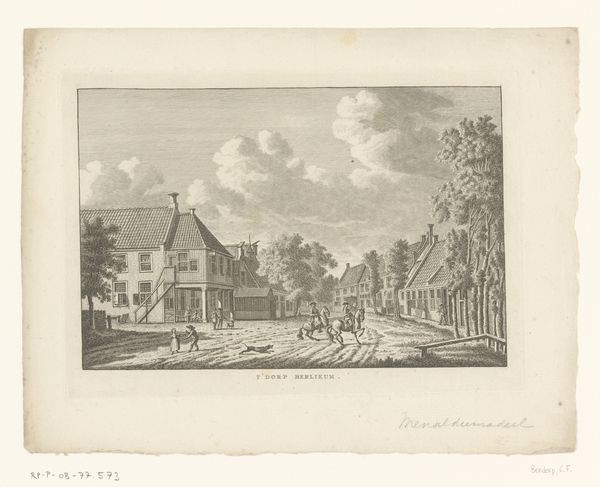
Gezicht op het Haagse Bos te Den Haag gezien vanaf de zuidzijde 1745 - 1775
0:00
0:00
painting, watercolor
#
painting
#
landscape
#
watercolor
#
forest
#
coloured pencil
#
cityscape
#
genre-painting
#
rococo
Dimensions: height 274 mm, width 422 mm
Copyright: Rijks Museum: Open Domain
Curator: This watercolor by Jean-François Daumont, created sometime between 1745 and 1775, offers us "A View of the Haagse Bos in The Hague from the South Side," now residing at the Rijksmuseum. Editor: It strikes me as wonderfully serene, despite depicting quite a busy scene. The subdued palette—soft blues, pinks, and greens—really lends a calming quality to the composition. Curator: It does possess a unique sense of Rococo lightness. Observe how the figures are arranged: they appear to be archetypes of Dutch society enjoying a moment of leisure, reflective of the cultural values attached to the bos, a symbolic sanctuary and retreat. Editor: Yes, the figures certainly animate the space. But for me, it’s how Daumont orchestrates the buildings against the landscape. Note how the artist aligns each structure to control recession into the distance using an aerial perspective; the modulation of light and atmospheric haziness are crucial. Curator: Interesting; I was drawn to the enduring presence of water. Throughout Dutch art history, water features have been pivotal, a continuous source and symbol that links the natural and urban landscapes, the divine and everyday life of people. Here it functions as both an idyllic element and a crucial part of city infrastructure. Editor: True, the water functions pictorially and practically within this constructed visual space. Consider the light playing across the surface of the water itself! Curator: For me, it evokes continuity. It reflects centuries of cultural interactions with and in nature, a reminder of its essential role in collective memory. It acts like a familiar landmark in a story of culture. Editor: Seeing how Daumont balances structure with open space—we could also speak of the sky in this way, its function to allow for "air" around the structural, architectural details—brings it into conversation with classical landscape traditions. Curator: Well, it's certainly enriched our understanding of the image through a blend of forms, functions, cultural symbols, and enduring historical impressions. Editor: Agreed, this visual approach really reveals layers we may not otherwise observe through symbolism alone!
Comments
No comments
Be the first to comment and join the conversation on the ultimate creative platform.
